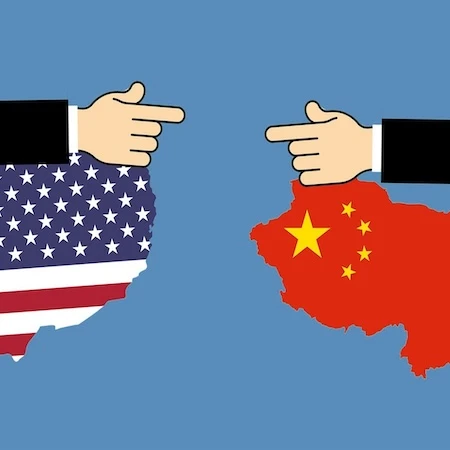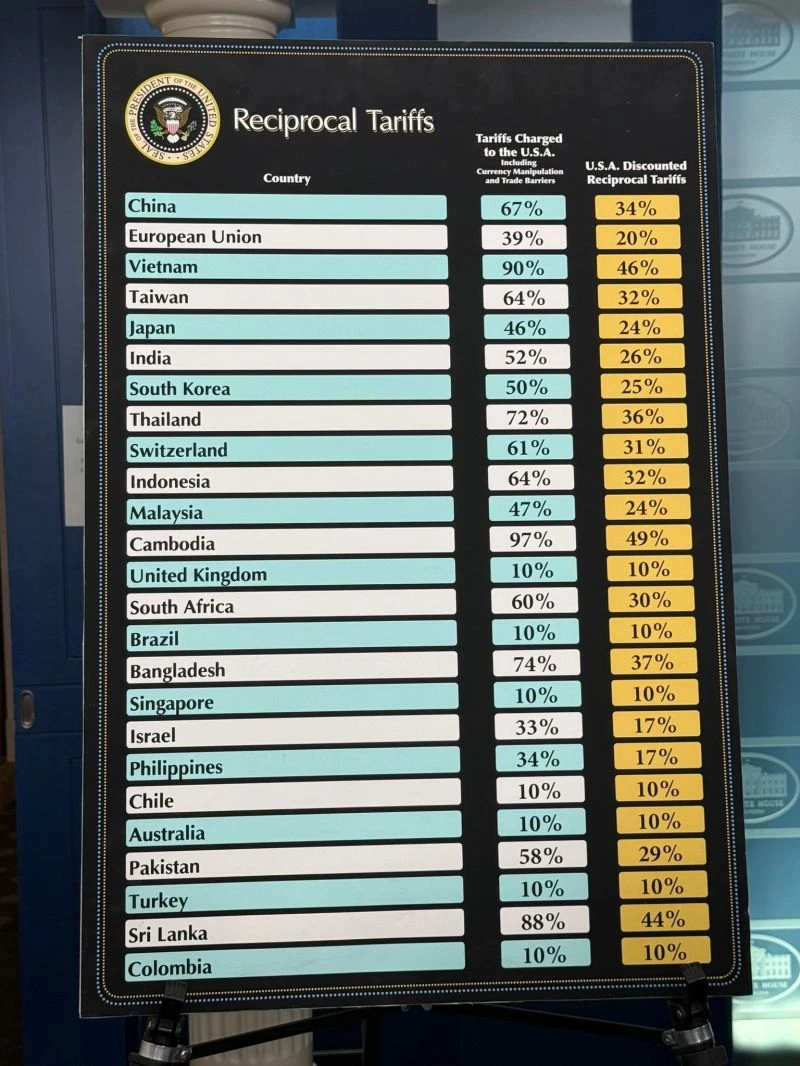

The recently released 2025 National Trade Estimate (NTE) Report from the Office of the United States Trade Representative (USTR) marks the 40th edition of a critical resource that trade professionals, exporters, compliance experts, and policymakers turn to year after year. In a world increasingly shaped by geopolitics, digital transformation, and supply chain shifts, this report serves as a compass for navigating global trade barriers.
For U.S. companies doing business abroad, the NTE Report is more than just a policy document. It’s a playbook for understanding the evolving challenges that hinder access to foreign markets—whether through tariffs, digital censorship, or non-transparent licensing schemes. With nearly 60 trading partners profiled, the 2025 NTE offers crucial insights for anyone involved in international trade.
The National Trade Estimate Report on Foreign Trade Barriers is a congressionally mandated, annual inventory of significant foreign trade barriers to U.S. exports, investment, and digital trade. It supports the President’s Trade Policy Agenda and enhances transparency and accountability in U.S. trade relationships.
Compiled by the USTR with input from federal agencies, embassies, and stakeholders, the NTE Report helps:
Identify foreign regulations that disadvantage U.S. firms
Provide leverage in trade negotiations
Inform enforcement of U.S. trade laws
Support exporters and investors with market intelligence
Understanding the structure of the report is key to using it effectively. The NTE classifies trade barriers into 14 actionable categories:
Import Policies: Tariffs, quotas, and customs procedures that increase costs or delay entry
Technical Barriers to Trade (TBT): Differing standards or testing protocols that act as hidden restrictions
Sanitary and Phytosanitary Measures (SPS): Non-scientific or excessive health and safety rules
Government Procurement: "Buy national" mandates or closed tendering that exclude U.S. firms
Intellectual Property Protection: Weak enforcement of patents, copyrights, and trademarks
Services Barriers: Limits on market access, discriminatory licensing, or local presence requirements
Digital Trade Barriers: Data localization, censorship, and restrictions on online services
Investment Barriers: Local ownership rules, technology transfer mandates, or repatriation limits
Subsidies & Import Substitution: Distorting support for domestic firms over foreign competitors
Anticompetitive Practices: Unfair state support or lack of enforcement of competition laws
State-Owned Enterprises (SOEs): Favoritism or non-market behavior by government-backed firms
Labor: Failure to uphold internationally recognized labor standards that distort trade
Environment: Low environmental standards used to undercut U.S. exports
Other Barriers: Corruption, transparency gaps, and issues not otherwise categorized
Here are key insights into how major U.S. trading partners are affecting bilateral trade with persistent or emerging barriers:
Digital trade restrictions: Data localization and cybersecurity reviews hurt SaaS and e-commerce firms
Opaque licensing regimes: Particularly in healthcare and technology sectors
State-owned enterprise dominance: Competitive imbalance from subsidies and preferential treatment
Biotech approval delays: Affecting U.S. corn and food exports
Labeling mandates: Frequent changes disrupt compliance
Customs inefficiencies: Inconsistent enforcement across ports
Agricultural quotas: Tariff-rate quotas (TRQs) still limit dairy and wine imports
Biotech approvals: Lack of timely regulation for GE crops
Digital content laws: Create friction for media and streaming platforms
Data localization requirements: Burden cloud, fintech, and SaaS providers
Public procurement bias: Domestic preference schemes disadvantage U.S. exporters
IP enforcement: Continued issues with patent protection and transparency
Digital regulation: GDPR and the Digital Markets Act create compliance overhead
TBT issues: Machinery, auto, and electronics face divergent technical standards
Geographical indications (GIs): Restrict branding of common food and beverage terms
Tariff disparities: U.S. goods at a disadvantage vs. CPTPP members
Testing protocols: Complex approval processes for ag and food products
Service restrictions: Challenges in legal and data-based services
Post-Brexit divergence: Especially in data privacy and food labeling
GI implementation: Risk to U.S. cheese and meat exporters
Services uncertainty: Ongoing adaptation of financial and tech regulation
Pharma pricing rules: Lack of transparency and access
Media restrictions: Content quotas limit U.S. streaming services
Non-tariff ag barriers: Continued issues with labeling and SPS standards
Digital Services Tax (DST): Targets major U.S. platforms
Data sovereignty push: Complicates cloud service operations
Diverging product standards: Especially in health and beauty sectors
Localization mandates: Government procurement favors domestic firms
Customs delays: Inconsistent and complex valuation processes
Service sector protection: Telecom and finance remain highly regulated
The practical implications of these barriers are substantial. They:
Raise compliance costs
Delay product approvals and customs clearance
Undermine market access strategies
Create legal uncertainties for IP and data use
For example:
A biotech firm may face delayed entry to Mexico due to pending regulatory approvals.
A cloud services provider in India may be required to build local data centers, raising CAPEX.
An auto exporter to the EU might incur additional testing costs due to differing safety standards.
Here’s how customs brokers, compliance managers, and trade lawyers can put the NTE Report to work:
Benchmark country risk: Use the report to inform market entry and expansion plans
Identify red flags: Spot emerging digital or regulatory threats early
Support advocacy: Back trade association lobbying or USTR submissions with data
Improve documentation: Align with customs procedures, SPS requirements, and licensing rules
To explore the full report:
Download the 2025 NTE Report on ustr.gov or above at the top of this article
Review related publications like the Special 301 Report (IP) and Notorious Markets List (counterfeiting)
Subscribe to a trade policy or global logistics newsletter for updates or the Freight Right TrueFreight Index weekly update.
In a volatile trade environment, the 2025 National Trade Estimate Report remains an essential tool for navigating the complexities of international commerce. For trade professionals and U.S. businesses alike, understanding and leveraging this report can be the difference between a successful market entry and a regulatory quagmire.
As trade relationships evolve, especially in sectors like digital commerce, biotechnology, and clean energy, staying ahead of these barriers will be critical. So, what markets are you watching in 2025—and are you ready to clear the path ahead?

Freight Right Global Logistics was among some of LA’s most prominent family businesses to be honored by the San Fernando Valley Business Journal on Oct. 29, ranking #8 for “Top 50 Most Influential Family-Owned Businesses” in the county.

Ongoing trade tensions between the United States and China continue to be the defining story of the 2019 global economy. What started off as an ongoing dialogue about the economic relationship between the two largest economies in the world has transformed

Learn the top 2 reasons for eCommerce cart abandonment—high shipping costs and slow delivery—and discover actionable strategies to reduce lost sales and boost conversions.

The United States-Mexico-Canada Trade Agreement (USMCA) Replaces the North American Free Trade Agreement (NAFTA)

Founder & CEO of Freight Right Global Logistics, Robert Khachatryan, sat down with Tuck Ly, Vice President of Clearpoint International, to discuss the major issues affecting the global supply chain and port congestion

The International Longshoremen's Association began their strike October 1, 2024, affecting ports running along the east coast and Gulf regions of the United States. See what ports are affected and what this strike can mean for shippers.

On April 2nd, the Trump administration announced reciprocal tariffs aimed at 50 countries and a baseline 10% tariff on all imports to the US. Here are the latest tariffs the US plans to levy against other countries.

Outer space is the newest export frontier, where rockets and satellites count as high-tech cargo, triggering a bureaucratic maze of customs, export controls, and duty drawbacks. As the space economy grows, regulators face challenges from orbital warehouse

This article will explain what international air freight charges are and how to calculate the chargeable weight when shipping goods overseas.

Why it’s so expensive to ship goods and to travel between multiple U.S. ports.